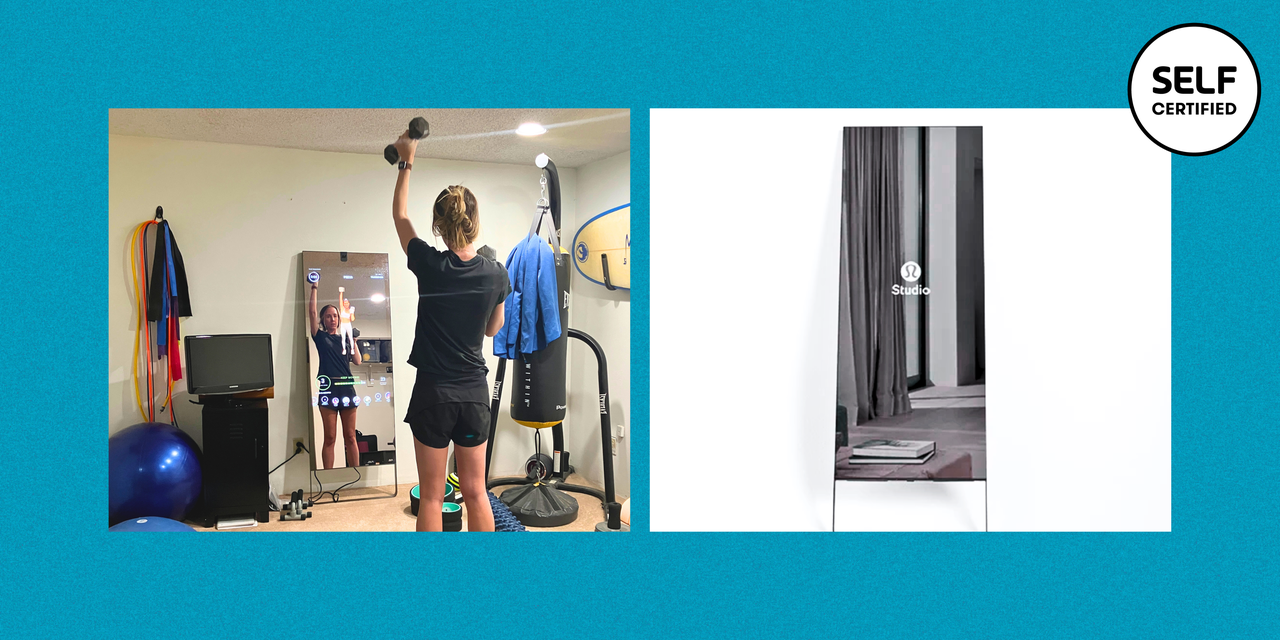Our “dungeon” is not the most inviting atmosphere, but it really was the only area that could comfortably house the Mirror. Not only do you need the space to prop it up, but you also need ample room to stand far enough back so you can see your full reflection while you squat, lunge, and plank. So if you have a tiny apartment, the Mirror may not be the best fit for you.
Variety of Workouts
One of the biggest perks of the Studio Mirror is that it offers a huge (and sometimes overwhelming) variety of content. Through the app, you can pick from a library of 10,000 classes and use tons of different search filters (like workout type, difficulty level, length, or instructor) to find routines that tickle your fancy. With the Studio Mirror, I was able to try new-to-me forms of fitness, like a chair strength workout and chair yoga, that aren’t offered at my local gym. I also liked that the Studio Mirror offered plenty of 15-minute workouts, which were easy to fit into my schedule and required minimal time commitment. Additionally, it was cool to take classes from raved-about boutique studios—like Pure Barre and AARMY—that I hadn’t yet tried and otherwise wouldn’t have access to.
Equipment Requirements
My biggest bone to pick: Unless you opt for a more expensive version of the Studio Mirror, it doesn’t come with any home gym equipment. And while there are certainly lots of bodyweight workouts you can do, if you really want to get the most out of this expensive piece of tech, it helps to have a plethora of at-home exercise tools at your disposal, such free weights, resistance bands, a boxing bag, yoga blocks, a Pilates ball, a step, etc.
Acquiring all of them—if you don’t have them already—can cost hundreds of dollars on top of the price of the Studio Mirror itself, so that’s something to consider when weighing whether this investment is right for you.
Special Features
Lululemon Studio App
READ RELATED: How to Navigate Dating When You’re Immunocompromised
The app is robust and user-friendly, making it easy to navigate to the library of classes, check the schedule of upcoming live options, review your recent workouts, and control settings on the Studio Mirror. Thanks to all the filters, I was able to readily find classes to try.
I also liked all the extensive descriptions included on the app—in many cases, you could read exactly what exercises you’d be doing and for how long. This provided me with valuable intel on whether or not I actually wanted to take a class. For instance, I’m just not a fan of push-ups, so when I learned that a specific strength workout I was eyeing included lots of ‘em, I opted for a different routine instead. Another plus? You can also stream classes from the app, so you can continue to work out even if you’re away from your Mirror.
Onscreen Info
There are a number of metrics displayed on the Studio Mirror while you work out, including exercise name, total workout time remaining, time left for a particular exercise, and name of your next move.
In the middle of the screen, there’s a video of the instructor demoing all the moves, and below that, more info: number of assigned/completed reps and sets, heart rate (if you chose to sync the device with an Apple Watch or other Bluetooth heart rate monitor), and your “class score,” or how much cardio, strength work, and/or recovery work you’ve done. (You can also get a “universal health score,” which is the summation of all your class scores.) You’ll also see the number of “classmates” working out along with you, as well as a rotating stream of their usernames, locations, and photos.
This sounds like a lot, I know, but it’s presented in a very tasteful and minimalist way—I never felt bombarded or distracted by the various data points.



